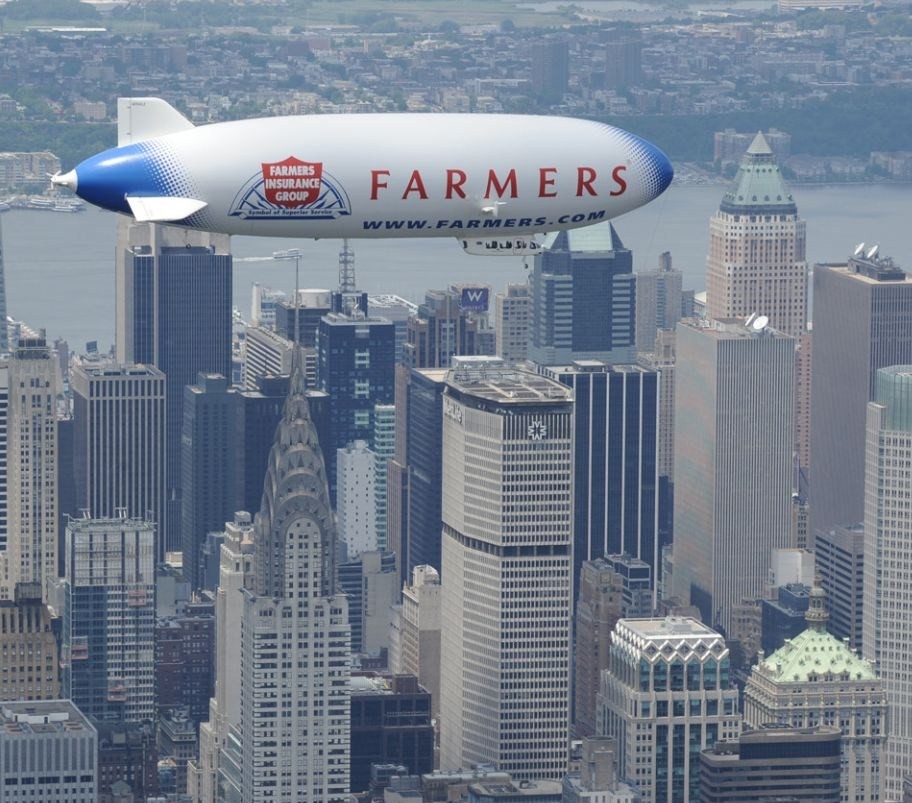Steampunk Airships…Plausible?
August 26, 2012 in Editorial

The most recent Three Musketeers film is worth watching, if for no other reason than seeing a sky battle between two airships. Firing black powder cannons at each other in the sky. Boarding actions at a thousand feet. Regardless of your attitude towards steampunk or roleplaying in general, airships really are awesome.
Now we’re reasonably sure that these things don’t exist, which is a bit of a dissapointment to everyone who has fancied becoming a sky pirate captain. Which is a shame as well, as the more sky pirates there are, the happier the pastafarians will be. But just in case it turned out to be realistic, we have taken a look at the financial plausibility of building one of these things.
Assuming a crew already of highly trained mercenaries and a pilot is already at your disposal, then the cost of the ship really boils down to three things; the cannons, the ship gondola (the lower bit where the people are), and the Zeppelin part.
The cannons are considerably cheaper than you might expect, selling for around $1,000, or ten for $10,000. Essentially a cannon is just a tube of metal, but even still this is cheaper than many rifles currently for sale. And given the comparative cost of a working naval cannon and a hunting rifle, the question arises of why more Americans don’t defend their homes with a 14lb piece of ordnance. Although in fairness the answer of why not go hunting with the cannon is reasonably obvious.

The boat itself, held beneath the Zeppelin, can really be any type or make left to the imagination. Because we could find both the weight and the price of it, we’ve gone with an old fishing vessel, The Mercedes. It seems about the right size and has a vaguely seventeenth century look to it.

$5,400,000 for this beauty. Seems almost a waste to imagine it going into a furious sky battle.
Now for the really expensive bit however; the Zeppelin to lift the thing. The Mercedes weighs a mighty 430 tonnes. Which means that it will require a Zeppelin capable of lifting 430 tonnes, which is 430,ooo kg.
The wonderful folks at Airship Ventures actually do own and operate their own Zeppelins. They reliably informed us that every kg of mass requires one cubic metre of helium to lift it, as a rough guide. However, according to their website only around a quarter of this lifting potential is ‘useful’, used for cargo and so on.
Crunching some numbers, this means that the Mercedes would require around 220 of the Zeppelin NTs that Airship Ventures use to lift it. And these don’t come cheap. After shipping, maintenance and docking these Zeppelin NTs cost around $31.2 million.
Or, for the required 220 Zeppelins, over six billion dollars. In fact, around $6,864,000,000.
So, for a fully kitted out steampunk airship? Somewhere around $6,869,410,000. It may seem steep now, but when the zombie apocalypse comes, it’ll seem incredibly cheap.

Centives would like to thank Brian Hall of Airship Ventures for providing information on Zeppelins to help us write this article.
Enjoyed this article? Perhaps check out our coverage of The Batman over here, or have a look at sponsorship in The Hunger Games. You can find this and other articles in our Editorials although for a selection of the best check out our Greatest Hits. And be sure to stay in touch:




also Hydrogen.
hydrogen is not a good idea, may you need reminding of the Hindenburg incident on May 6 of 1937, the only reason Germany used hydrogen was at the time they were at war with England and France so the use of the worlds supply of helium (which was located in America) was out of the question, all modern zeppelins use helium for it’s non-explosive factor, plus yes you could get rid of the lead ballast, as well as the thousands of Kg’s in the Masts, Sails, Meters of rope used on said sails,
so for the moment lets take a look at the Hindenburg stats
LZ-129 Hindenburg statistics:
Length: 245 m / 803.8 feet
Diameter: 41.2 m / 135.1 feet
Gas capacity: 200,000 cubic meters / 7,062,000 cubic feet
Lift: 511,500 lbs
Cruising Speed: 125 km/h (76 mph)
Maximum Speed: 135 km/h (84 mph)
Main Powerplant: 4 Daimler-Benz 16-cylinder LOF 6 (DB 602) Diesels
Crew: 40 flight officers and men; 10-12 stewards and cooks
Passengers: 50 sleeping berths (1936); 72 sleeping berths (1937)
now a quick look into the price of helium
Government users was $3.06 per cubic meter
non-Government users was $3.75 per cubic meter
so 3.75 x 200,000 = US $750,000
but i guess if you could afford a super light frame/skin/bladder/ship/crew/ and the maintenance then 3/4 of a million dollars, plus the factor of helium decay you would have to top up the helium every 2-5 days,
zeppelins/dirigibles are a great fantasy (and honestly I’m still calculating and designing a feasible and “cheap” way to build one) but not within the realms of most peoples price ticket
There is a major flaw in your calculations : a sailship has a few tons of lead under the water used to maintain his center of gravity under the floating line.
An airship doesn’t need that, since it floats in a fluid passengers can breathe.
So, you shall remove at least half of the weight, probably more since the lead also compensate for the force of the wind in the sails on a sailship.
(Sorry for my poor english, i hope i’m understandable)